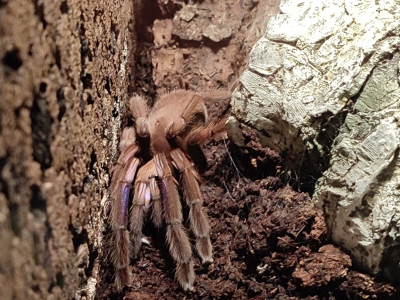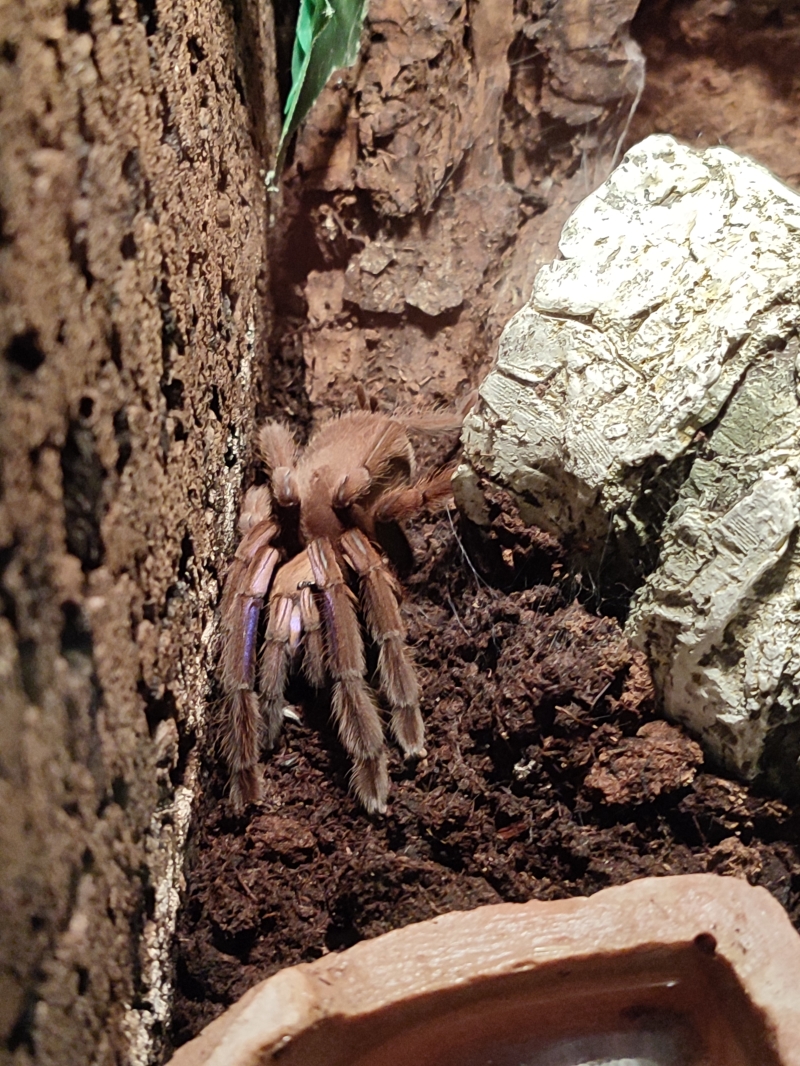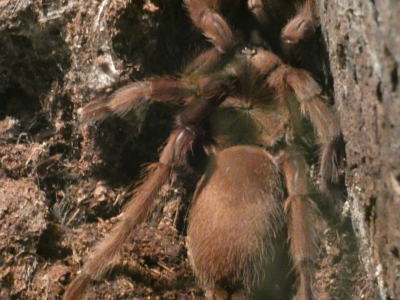Chilobrachys sp electric blue Chilobrachys sp electric blue
Animals in our sanctuary
Goldie

Goldie was bought together with several other tarantulas by a student. When the care for the animals turned out to be harder than expected and the animals were less 'cool' than he hoped, he wanted to get rid of them. His reasoning: "If they are not taken in by a shelter, I will flush them down the toilet". Upon arrival several of them were already dead.
Where does it feel at its best?
This species is native to Thailand. Average temperatures there are around 26 to 28°C. They also like it humid, with humidity between 60 and 80 per cent. It is a burrowing species, and so will often find itself underground.
What does it like to eat?
Like most other tarantulas, the Chilobrachys is a nocturnal animal and goes looking for prey at night. At the end of each leg are sensory organs sensitive to smell, taste and vibration. With these, the spider finds its prey. Once it has caught it, it grasps it with its pedipalps (a kind of front legs with a tactile function) and injects venom into its prey. This venom, a protein-dissolving enzyme, not only paralyses the prey, but also triggers its digestion: it causes the prey to liquefy inside so that the spider can suck it dry. What remains afterwards is a kind of hollow skin. Usually the spider hunts insects, but sometimes small vertebrates as well, including small birds.
MORE INFO
Appearance
Like other Chilobrachy species, the electric blue is mainly brown and grey in colour. Their most striking feature is their bright blue front legs. This colour is present from the start and becomes increasingly bright as the animal ages. They can grow up to 15 centimetres in size.
Facts
The electric blue is anything but a well-behaved species. They can come out explosively and suddenly run away quickly. Their bite and venom is pretty powerful, and they are relatively quick to attack if they feel threatened.
As with all spiders, females live much longer and tend to be noticeably larger too.
Threat
The electric blue is not endangered per se, as it is a pure breeding form for hobbyists.





